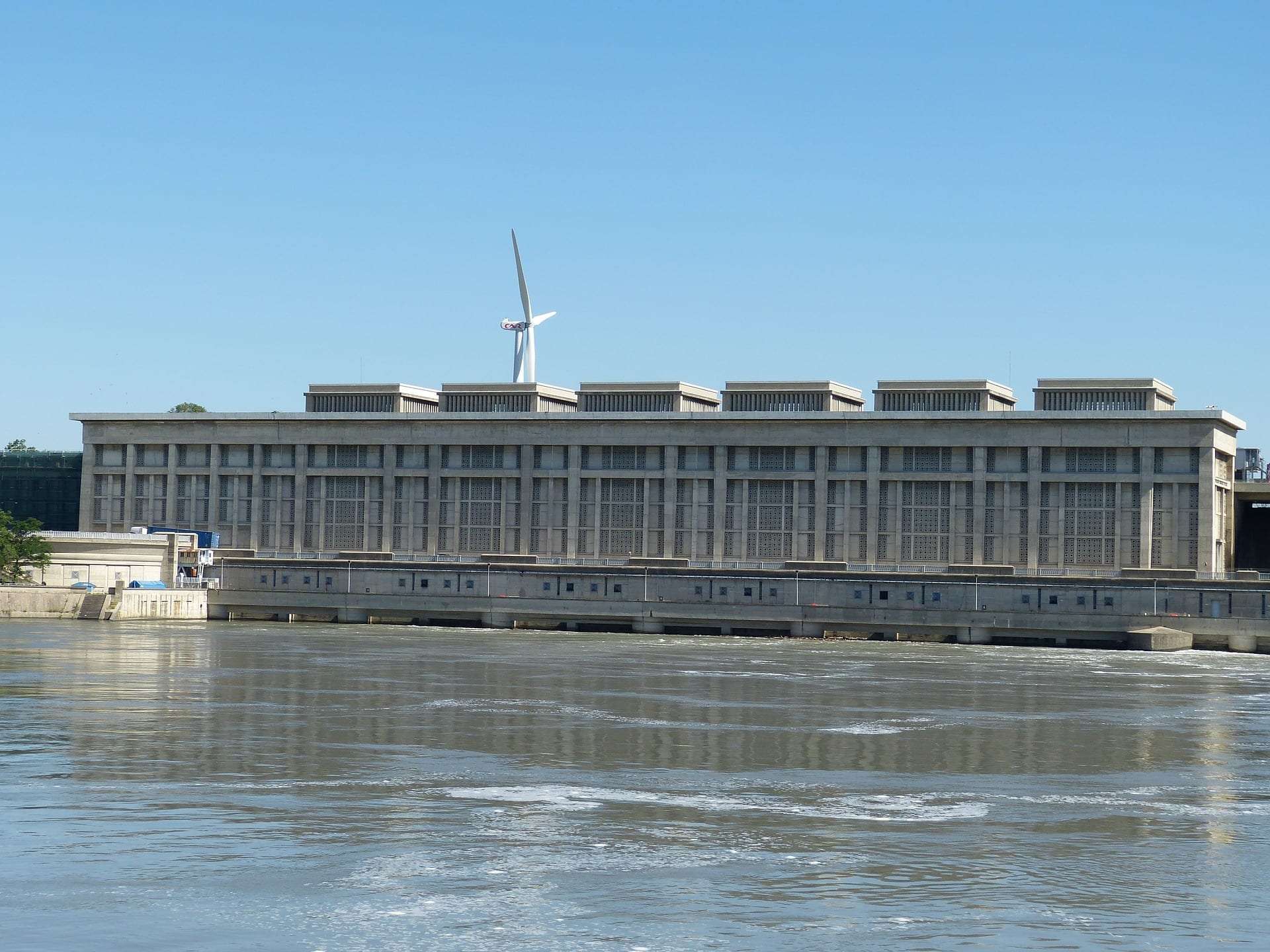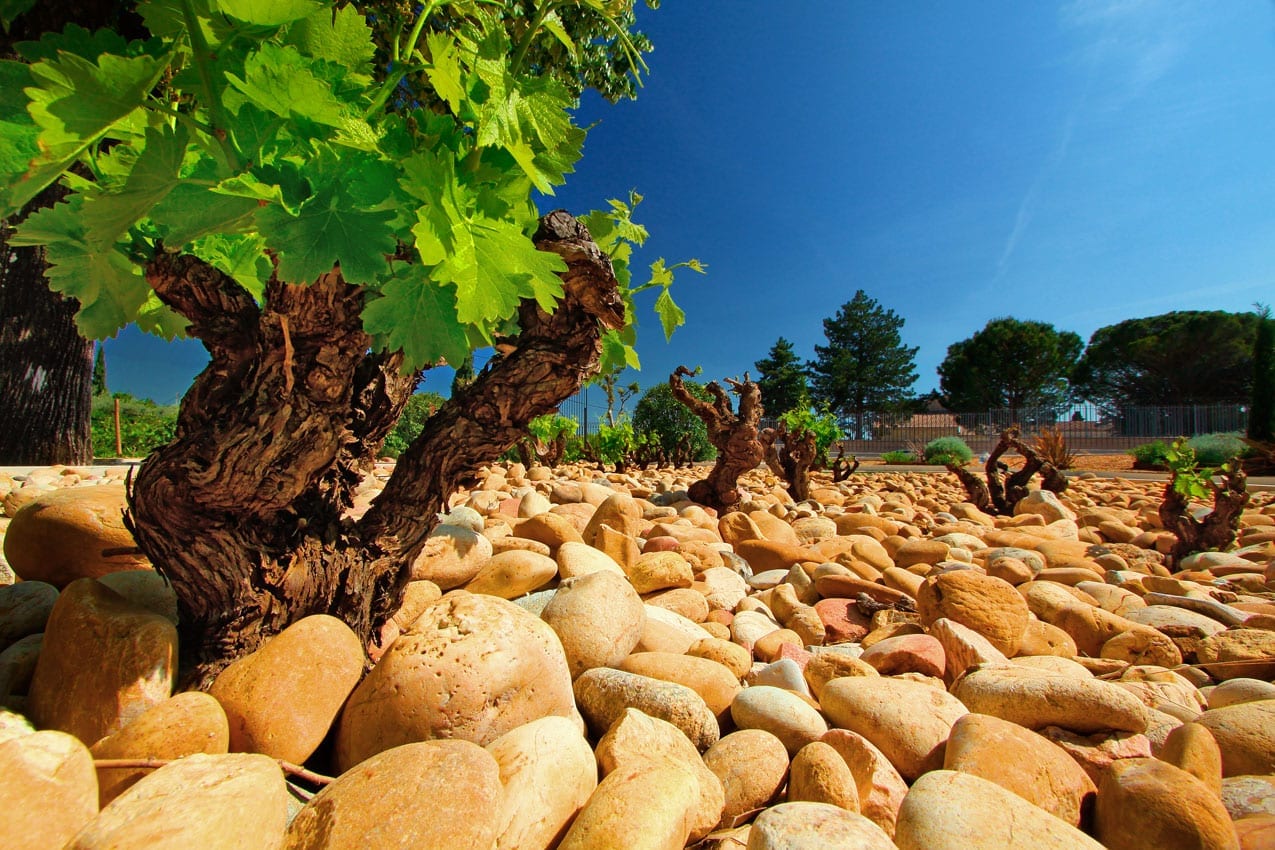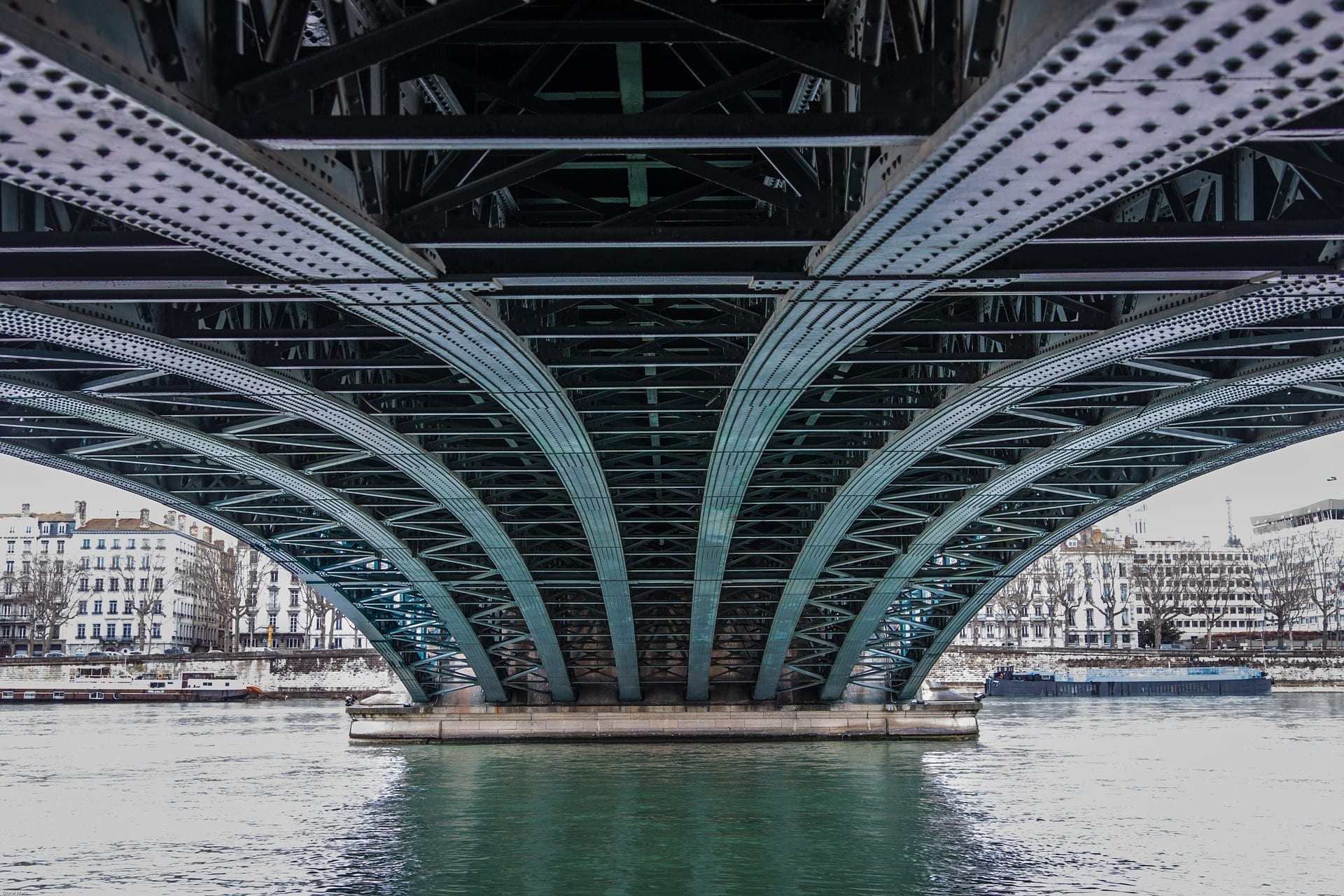The Rhone and the Power of Its Waters
Managing and protecting a great European river.
The Rhone, like all great rivers, brings risks and benefits, impacting the communities who live along it and who in turn have tried to control it. These communities are learning to achieve an optimum balance between benefit and control, and to restore and protect the natural character and ecology of the river, as encompassed in the principles of the EU Water Framework Directive.
The River Rhone is of great importance to the Mediterranean because it provides the largest inflow of any river into the sea. Its average discharge of 54 km3/year (1,720 m3/sec), represents 12% of the total of all river inflows (about 450 km3/year). The second largest inflow is from the River Po of Italy with 49 km3/year (11%). The Nile – with the largest basin of all Mediterranean rivers – supplies only 15 km3/ year (3%) due to lower rainfall in North Africa compared to Europe, and the impacts of dams and irrigation. The Rhone is a major source of nutrients and particulate matter to the Mediterranean Sea (Alliot et al. 2003), and an important factor in fishery yields of the Gulf of Lion.
The Rhone basin is transnational: 92% in France, 8% in Switzerland, and a very small part in Italy. 16 million people live along its course. The source of the 813 km river is the Rhone Glacier in southern Switzerland, at an altitude of 1765 metres, from where it flows through Lake Geneva (Lac Léman) and out through the city of Geneva at its western end. Soon after Geneva (population 200,000), it crosses westwards into France, travelling southward through Lyon (population 500,000), and later through Valence, Avignon and the ancient Roman town of Arles, below which it branches to either side of the Camargue (the Rhone’s original delta) as the Little and Great Rhone, eventually discharging into the Mediterranean Sea. The Camargue is an extensive wetland of international importance (recognized under the Ramsar Convention), and home to important plant and animal species, including the iconic pink flamingo. At Lyon, the Rhone is joined by its largest tributary, the 473 km long Saone, extending the river basin northwards, nearly as far as Strasbourg.
Flood management and transport
Historically, since Roman times and before, the Rhone has been an economic corridor and transport route between the Alps and the Mediterranean. The north-south Saone-Rhone corridor has also served as an important link between the North Sea and the Mediterranean. Significant modifications of the Rhone started in the early 1800s, initially for flood protection. Large floods in 1840 and 1856destroyed parts of Lyon, leading to additional flood protection schemes. However, in 1857, the importance of flood plains for absorbing flood flows was recognized, and a ban on embankments upstream of large cities was applied – an important lesson for modern river management. The river is now significantly canalised between Lyon and the sea to aid navigation, characterised by widening and deepening of the main channel or cutting of straighter side channels. Flood management can be a significant source of conflict at local level. France imposes strong restrictions on land development on flood plains, which may conflict with landowners’ plans for development or dikes for local flood protection (Pigeon, 2013).
Supporting renewable and nuclear energy sources

The Rhone provides an important source of hydro-electric power, in the Alpine reaches in Switzerland, and upstream of Lyon in France, with most developments between the late 19th century up to the 1980s. There are now 24 schemes (Olivier et al 2009): four in Switzerland, one shared on the French-Swiss border (Chancy-Pougny) and 19 in France. They have a total capacity of 2.8 GW, and produce an average total of 15,000 GWh/yr. For France, the Rhone hydropower represents approximately 13% of its renewable energy, and about 4.5% of all electricity supply. The Rhone also supports a number of nuclear power plants on its banks through supply of cooling water.
For France, the Rhone hydropower represents approximately 13% of its renewable energy, and about 4.5% of all electricity supply.
The river’s influence on culture
Around the world, cultures living along major rivers depend on them for water supply and irrigation, for transport, for carrying away waste (in the modern world, hopefully with proper treatment). Some major rivers, such as the Ganges in India, have religious significance. The flooding of flood plains and deltas brings vital nutrients for agriculture. Some benefits are more subtle. The lower Rhone is famous for the Cotes du Rhone wine region. The torrents from melting ice following the last ice age left, in addition to thick layers of silt and clay (raw material for soils), a high concentration of large rounded flattened pebbles (les galets), up to several centimeters in size, across the landscape. The role these pebbles play in the ‘terroir’ is to absorb the sun’s heat during the day and radiate it back onto the grapes at night, thus helping with the ripening and intensity of flavor.

Implementing the River Basin Management Plan
The Rhone is fairly typical of a major European river. It was created by natural geological and climatic processes over millions of years but has been heavily modified over recent centuries to be moulded to man’s needs and to pacify its more powerful and damaging characteristics. The challenge today is to maintain the positive achievements and benefits, while restoring more natural characteristics and quality where possible. Many of the natural characteristics are also now recognized as being essential to man’s interests. For example, natural flood plains and meanders are often better than engineering works for flood protection. A healthy river supports the natural capital of biodiversity and healthy ecosystems.
The challenge today is to maintain the positive achievements and benefits, while restoring more natural characteristics and quality where possible.
Prior to the EU Water Framework Directive (WFD), France was already advanced in catchment-based water resources management. The Water Act 1992 initiated the creation of Water Management Master Plans for six hydrographic basins, including the Rhone-Mediterranean-Corsica (RMC) plan (1996). These already contained many of the characteristics of the WFD.
The WFD is applied through the River Basin Management Plan (RBMP) of the Rhone-Mediterranean. The main part of the RBMP applies to the Rhone river basin, but also includes the whole of the French Mediterranean coast (excluding Corsica). It is common to include smaller river basins (such as those along the Mediterranean coast) in a larger RBMP, as they are too small to justify their own.
The complete Rhone RBMP is over 500 pages in the main document, and 260 in the Programme of Measures. In French, the RBMP is called SDAGE (Schéma Directeur D’Aménagement et de Gestion des Eaux). The principal sections are, typical of most RBMPs:
- General context
- Current status Environmental objectives Exemptions from objectives
- Development of the RBMP through stakeholder engagement and consultation
- Programme of Measures.
The following are summaries of some of the key aspects of the RBMP.
River basin characteristics
The Rhone-Mediterranean basin consists of the Rhone river basin and a collection of smaller sub-basins covering a total of 127,000 km2, representing 25% of French mainland territory. Its water resources are relatively abundant, including a variety of watercourses, many lakes, wetlands, Alpine glaciers, and aquifers. However, there are large differences in the availability of resources locally, according to geology and climate. Geographically, the basin extends from the Champagne and Lorraine departments in the north (along the Saone tributary), to the Mediterranean coast in the south, as far as the border with Spain. The population is 15 million.

Mapping of important features
The mix of land surface is as follows: 51% forest and woodland, 27% agriculture, 14% grassland, 6% urbanised, 2% aquatic. The basin contains nearly 2,800 surface water bodies, of which about 230 are ‘heavily modified’ and 22 are artificial (such as reservoirs). The definition “heavily modified” covers water bodies with essen- tial artificial modifications for such things as navigation, flood defence, water supply and hydro-power, and allows for exemption from the principles of restoration to a natural condition and quality.
There are 238 identified groundwater bodies or aquifers. Of these, 68 are alluvial, meaning they consist of shallow layers of sand and gravel, and often exchange water with surface water bodies such as lakes and wetlands. Alluvial aquifers are easily accessible for abundant water supply, but also vulnerable to pollution. The rest of the aquifers are in porous hard rock, often with depths of 10s or 100s of meters. These are generally less vulnerable to surface pollution, except where large fractures or caves are present, which can transport pollution rapidly.
The RBMP maps many other important types of information, such as water quality, land use, pollution incidents, flood risk and projected impacts of climate change.
Environmental objectives
The Objectives and the ‘Programme of Measures’ are characterized according to 9 key principles:
- Adapt to climate change
- Prevent or address problems at their source (instead of at point of impact)
- Prevent further degradation of aquatic environments
- Take account of economic and social issues while ensuring sus- tainable provision of public water and wastewater services
- Reinforce the principals of river basin management to ensure a balance between land and water
- Combat pollution giving priority to hazardous substances and human health including domestic and industrial pollution, eutrophi- cation and pesticides.
- Preserve and restore the natural function of water bodies and weltands and their biodiversity
- Achieve balanced sharing of water resources now and into the future
- Improve the protection of popu- lations from flooding, taking into account the natural functioning of water bodies
In the 2010 RBMP, the key objective was for 66% of water bodies to achieve good ecological status by 2015. This was achieved for 52%. On chemical status, 93% of surface water bodies achieved the target compared to an objective of 94%. For groundwater bodies, the result was 85% achieved compared to an objective of 87%. Also for groundwater, 91% of aquifers achieved a good status for water availability compared to an objective of 100%.
Data are the foundation of knowledge, critical to understanding the status of the water environment.
objective of 87%. Also for groundwater, 91% of aquifers achieved a good status for water availability compared to an objective of 100%.
Does the failure to achieve all or most objectives mean the WFD and RBMP are failures? The reality is that most RBMPs across Europe did not achieve their objectives. A valid view is that it is better to set a high bar of achievement, with the result that more is achieved than with a lower bar. The most important result is that good progress is being made, and expected to continue. The programme also drives the collection of comprehen- sive data. Good data are the foundation of knowledge, critical to understanding the status of the water environment and measuring changes (good or bad).
The general result is that the status of surface water and groundwater bodies in terms of both quality and quantity has made significant and continuing progress. This is a key objective of the WFD. The renewed RBMP objectives remain ambitious.
Programme of Measures (POM)
The POM sets out the actions to achieve the RBMP objectives. The POM for the Rhone is comprehensive, covered in a dedicated 260 page document. In addition to the detailed technical activities, implementation of the POM, will be achieved through a combination of regulation, financial incentives and communication.
Stakeholder engagement is recognized as an important requirement for successful implementation. Around 150 consultation meetings were held across the river basin at all community levels including public and private sectors, regulators, local business representatives, land owners and community organizations. Technical design followed policy agreements and financial assessments.
The POM lists thousands of actions under each sub-basin, and for individual water bodies, such as the following examples:
- Restore ecological continuity (free movement of species and sediments)
- Restore natural river flow and natural features
- Restrict the dispersal of fertilizers and of erosion
- Discourage the use of pesticides and promote alternative practices
- Promote sustainable farming prac- tices, such as organic, crop rotation, improved land management
- Ensure wastewater treatment facilities are in good order and achieving regulatory quality standards
- Promote water efficiency in the agricultural sector
International cooperation
Unlike the Rhine and Danube, there is no formal international commission for the Rhone. Switzerland does not implement the WFD, but does cooperate on interna- tional river basins (Nilsson et al 2004). In the Rhone basin, it cooperates with France on Lake Geneva (Léman), through the Commission International pour la Protection des Eaux du Léman (CIPEL, founded 1963, www.cipel.org), whose main focus is protection of water quality for drinking water (for 800,000 people) and for the natural environment. CIPEL territory covers the upper Rhone catchment to the point where it crosses to France, which includes the whole Lake Geneva/Léman catchment and the Arve tributary (mostly in France). In addition, the RBMP states that the French authorities formally consult the Swiss during RBMP development. Detailed historical reviews of transboundary governance of the Rhone and its challenges are given in Bréthaut & Pflieger (2013) and Bréthaut & Clarvis (2014).
Unlike the Rhine and Danube, there is no formal international commission for the Rhone.
In summary, the Rhone is a major European river of great significance to the Mediterranean. Like many large rivers, it has undergone many man-made influences over the centuries, historically for human benefit and protection with little consideration for environmental impacts. River management has been complicated by competing priorities between different interests, such as energy, water supply, navigation and flood protection, and more recently, a greater demand to restore and protect the natural environment. Modern sustainable river management requires that the right road is followed between protecting human interests (water supply, economical, transport, flood protection, energy) while also achieving as much as possible to restore the natural quality and condition of the river and its associated landscape. Effective multi-stakeholder governance, including transboundary cooperation are critical to success. This is what the Water Framework Directive sets out to achieve for all rivers across the European Union. The results remain imperfect, but important progress is being made.